Feature: Conversations
Nicolas Bourriaud and Karen Moss
French theorist Nicholas Bourriaud, a curator at the Palais de Tokyo in Paris, and curator Karen Moss, Director of Exhibitions and Public Programs at the San Francisco Art Institute, settled down with Stretcher inside an artwork by Andrea Zittel to discuss the role of curators in contemporary art. Zittel’s Pit Bed was installed in SFAI’s galleries as part of Bourriard’s exhibition TOUCH: Relational Art from the 1990’s To Now, an exploration of the interactive works of a new generation of artists. The exhibition was a springboard for Moss and Bourriard to discuss Bourriard’s book about relational esthetics, changing curatorial practices and notions of the new. But it was a surprising practicality — museum hours — that opened the discussion.
— Ella Delaney
Stretcher Palais de Tokyo has unusual hours, noon to midnight. That simple shift changes the gallery into a more social space. In effect, it embodies the notion of relational aesthetics at an institutional level. How does relational aesthetics change what you do as curators?
Nicolas Bourriaud There are two ways of building an institution. One way is to build a jewelry box to present objects and the other one is to conceive of it as an open market where everything is removable and you can change things all the time. That was the main idea at Palais de Tokyo. I think we cannot present art the way we did in the last century because now we’re in 2002. We have to start from people’s behaviors and the way they live. The idea with Palais de Tokyo was to adjust the art institution to the way people live in their city and obviously, it had to be open until midnight.
Karen Moss One of the most successful programs at Walker Art Center was called "Late Night in Gallery 8," an after-hours music series that John Killacky did. If you can’t change the box, you can somehow shift the time to allow for a different kind of social interaction. I think here most museums close at six o’clock on their regular nights and eight o’clock on their late nights. It’s ridiculous. Young people are starting to go to clubs at midnight. If we want people to continue to occupy social spaces within an art context, they have to be open late.
NB There is a huge contrast between the hours of the museums and their purpose. They keep the same hours as banks, post offices or businesses, but they offer entertainment. Just think about a movie theatre which closed at six — the whole industry would collapse! For me art is something you want to do as a social, recreational activity rather than a kind of transaction/administration.
Stretcher Karen, tell us about the class you and Nicholas are teaching in conjunction with the exhibition.
KM It’s called "Art Meets Everyday Life - Social Interaction and Relational Aesthetics." The class was conceived to coincide with Nicolas’ exhibition, which had been in the planning for eighteen months. We wanted to get students involved not only in coming to the gallery, but in the artistic practices that relational aesthetics proposes. The seminar started with a few weeks of historical background. We talked about how artists in the 1960s and ‘70s were concerned with redefining or de-defining art, with dematerializing work and consciously going outside the gallery and museum system. Younger artists today have had that work done for them. They have the freedom to do relational work because they want to, not because they have to.
NB In the 1960s and ‘70s artists invented new tools. I think my generation and the upcoming generation of artists consider the history of art as a toolbox.
Stretcher So history has changed from baggage to toolbox.
KM Interesting. Yes, absolutely.
NB It’s no longer a weight. Paradoxically, if you don’t care about the new, you can make new things.
KM One of the questions that a student asked Nicholas was, "Is the idea of relational aesthetics a manifesto?" And you had a great answer.
NB The idea of a manifesto is totally related to the idea of newness and novelty. Instinctively I find it ridiculous. I wouldn’t be able to explain why, but it’s out of purpose for me. I’m not trying to relate to the old form of the manifesto. I didn’t think about it.
Stretcher I hear so often from students that everything has been done.
NB People already said that in the twelfth century. This pressure of the new is something which is quite new in history. But it was not a determinant interrogation for artists for centuries. And it didn’t make them repeat things. People like Vermeer and Velasquez did new things, but they didn’t think about "newness" specifically because it was not of value for them. The new as a value is something which is gone now.
Stretcher So what’s replacing it?
NB I think that maybe the idea of being relevant, of being useful, of being pertinent is more important to artists than just doing something new — new in what sense actually? It’s like the Guinness World Book of Records. What really good artists do is to create a model for a possible world, and possible bits of worlds.
KM I like your term micro-utopia.
NB Avant gardes were about utopias. How is it possible to transform the world from scratch and rebuild a society which would be totally different. I think that is totally impossible and what artists are trying to do now is to create micro-utopias, neighborhood utopias, like talking to your neighbor, just what’s happening when you shake hands with somebody. This is all super political when you think about it. That’s micro-politics.
Stretcher It’s very demanding of the artist.
NB What’s an artwork? Any artwork materializes a relation to the world; if you see a Vermeer or a Mondrian, it’s concretized, materialized, visible in relation to the world that they had. You can decode and interpret for yourself and use it for your own life. Or for your work if you’re an artist. It’s a chain of relations. History of art is about that — a chain of relations to the world. So, any artwork is a relation to the world made visible.
Stretcher About this new relationship between the artist and their audience, Christine Hill, one of the artists in TOUCH, said the other night. "I really wanted to be there to hear what my audience had to say." I know so many artists who are working in their studios who feel that after they put their work out there they’re completely removed from it. They never hear anything back. It’s as if you throw it into the void ....
KM It’s true for curators as well. You do have a certain voyeuristic opportunity when you are in a space and you can watch spectators viewing the work, or you receive response back if there’s a publication. But often you don’t get feedback. That’s why having the artist present [Ed. note: three of the artists in TOUCH spent time in the gallery as part of their work] is so intriguing. It’s not an artist shipping a work, you have people actually here. This was also true with some other exhibitions I’ve personally been involved with like In the Spirit of Fluxus at the Walker. Or the John Cage exhibition at MOCA in LA. The live action becomes really important to the beginning of the exhibition. It is also interesting how few of the artists in this exhibition are involved with technology. While their work may somehow comment on the technological, they are not much involved with technology, which is refreshing.
NB They just use it.
KM They use it, but they’re not commenting on it.
NB But their way of thinking was totally modified by the Internet and e-mail. I was never really impressed by any interactive high technology artwork. I think the best of Internet went into artworks which don’t clearly use it, but use its possibility in order to think differently.
KM But, speaking of technology, in your book Post-Production, you talk about the sampler, the hacker and the programmer as different mechanisms for assembling the toolbox of history in a new context. Because of the conundrum of not being able to produce anything new, I find it interesting that your proposal for art is post-production — mining previously made work and recontextualizing it. That is what, if anything, could be considered new, the recontextualization of the already-made. I think that Post-Production is such an interesting follow-up to Relational Aesthetics.
NB It’s a prologue, in a way. Ten years ago, it would have been completely impossible to consider a DJ as an artist for example. Now, it’s normal. Nobody would even think of saying "you’re already playing pre-existing records, so you’re not an artist." That’s vanished. The idea of the artist as a kind of demi-god creating the world from a blank sheet of paper is something that has just vanished from our every day culture. The fact that the DJ or programmer or artist uses already existing forms in order to say what they want to say is something that is certainly the most important thing at the moment because it totally goes beyond the art world.
KM And this is why the institutional frame has to shift. Because it’s not just that the work is interdisciplinary. It is a complete overlap between all different forms of art and entertainment that need new and more open spaces to exist because they’re not separable in any way any longer. I imagine that the spaces for exhibiting art will feel more like clubs. There’s an example here — 111 Minna — it’s a club but there’s art there as well. One begins to see the breaking down of those barriers. And one wonders when one is in a white cube what one needs to do. Sitting in this pit bed disrupts the box of this gallery space. I think more and more that is what has to happen to accommodate this kind of post-productive work.
Stretcher Back to the role of curators in creating the new institutions that you are talking about. Nicholas, you come from the discipline of philosophy. You didn’t follow an art history and academic track. I think that may have facilitated your finding a different perspective to all these issues. Artists have been making this work, yet it took someone from outside the discipline to put a different light on it.
NB I think the most important thing is you don’t have to be intimidated by knowledge and by history. Most people’s relation to history can be summed up by this image of somebody trying to walk into a room with a lot of porcelain and fragile things and not wanting to break any of them. It’s super-precious and it has to be kept exactly like it is. I think all these artists do exactly the opposite. Which is they don’t care about any historical object, they just use it and try to understand what’s in it. And these are two different ways of seeing history — first as a commodified history, doing nothing to change it - or revisiting it all the time and feeling totally free.
KM And I think curators are changing, the shift is not just because the artistic practices are changing and artists are changing. I was trained as a traditional art historian. Because I went to graduate school once in my twenties and once much later, and in between worked in museums, I was between the generation in which people were trained in extremely narrow art historical ways and curators were still largely connoisseurs, and the new trend. I’ve worked in traditional museums, but I’ve also had the good fortune to work in a lot of alternative artist spaces or museums that weren’t really museums. I think that it enabled me to be someone who presented work that was not as traditional. But there’s still a real schism within institutions. Because what you have are people who were trained in a linear, formalist, modernist way. And now you have younger people coming in who have studied cultural history, they’ve studied visual culture, they’ve studied architecture, philosophy — and I think this is a very good thing for the field.
(2) COMMENTS
If I understand correctly what you’re asking for, I doubt very much that the text of Relational Esthetics is online. It’s published by Les Presses du Real, Paris, 2002. I don’t think it’s a very expensive book—maybe $12-15 - although with the drop of the dollar and the shipping, if you can’t get it in the US it might be costly ordering from Paris.

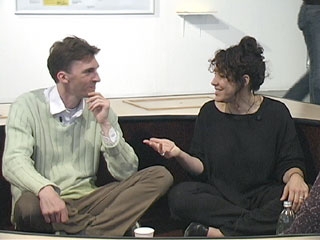
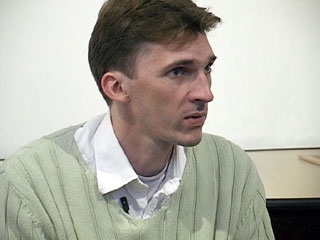
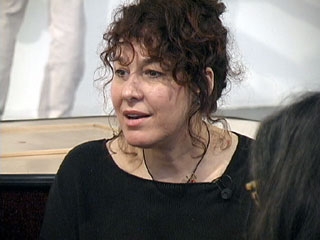
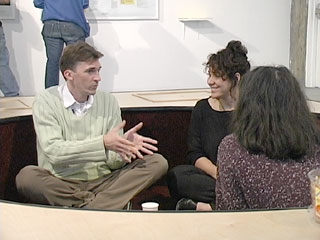
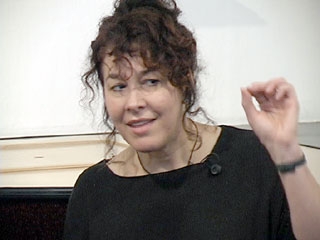
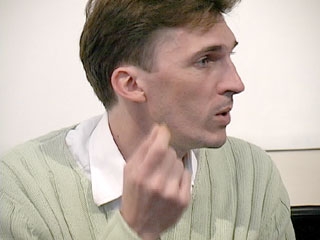
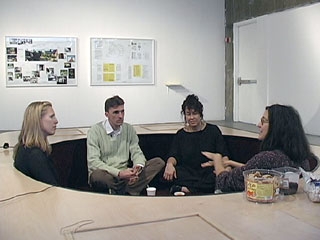
can anyone suggest an online (English translation) of Bourriaud’s “Relational Aesthetics”?
Thanks.
geraldine • June 04, 2003